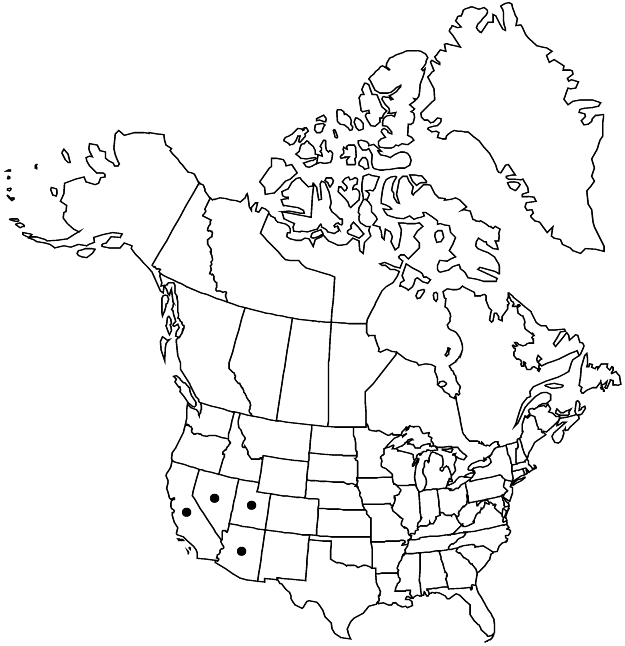Eriogonum brachypodum
Proc. Amer. Acad. Arts 8: 180. 1870.
Herbs, spreading, annual, 0.5–4 dm, glandular, greenish. Stems: caudex absent; aerial flowering stems erect, solid, not fistulose, 0.2–0.7 dm, glandular. Leaves basal; petiole 1–4 cm, tomentose; blade orbiculate to cordate, 1–3(–5) × (1.5–)2–5 (5.5) cm, densely white-tomentose abaxially, less so to subglabrous and green adaxially, margins usually smooth. Inflorescences cymose, open to rather diffuse, often flat-topped, 3–40 × 3–100 cm; branches glandular; bracts scalelike, 1–3 × 0.5–1.5 mm. Peduncles absent or deflexed, straight, stoutish, 0.1–1.5 cm, glandular. Involucres turbinate to campanulate, 1–2.5 × 1.5–2.5 mm, glandular; teeth 5, erect, 0.3–1 mm. Flowers 1–2.5 mm; perianth white with greenish or reddish midribs, becoming reddish, glabrous; tepals dimorphic, those of outer whorl ovate to oblong and often auriculate proximally, those of inner whorl usually lanceolate; stamens included to exserted, 1.5–2.5 mm; filaments glabrous or pilose proximally. Achenes brown to black, lenticular to 3-gonous, 1.5–2 mm, glabrous. 2n = 40.
Phenology: Flowering year-round.
Habitat: Sandy to gravelly washes, flats, and slopes, saltbush, creosote bush, greasewood, mesquite, blackbrush, and sagebrush communities, pinyon-juniper woodlands
Elevation: 100-2300 m
Distribution

Ariz., Calif., Nev., Utah.
Discussion
Eriogonum brachypodum is variable in overall shape, peduncle length, and shape and size of involucres and flowers. Spreading plants with longish peduncles and narrow involucres occur in southwestern Utah and adjacent portions of Nevada and Arizona; this is the “parryi” phase of the species. Typical E. brachypodum is low and flat-topped, with the inflorescence up to 10 dm across. The involucres are usually sessile and campanulate rather than turbinate. The two phases intergrade completely and a taxonomic distinction is not warranted. Dried plants of the typical phase often are used as decorations.
The species is common and even weedy in places. It occurs from Churchill and Pershing counties, Nevada, south through Mono and Inyo counties to eastern Kern and San Bernardino counties, California, then eastward through Nevada (Clark, Esmeralda, Lincoln, Mineral, and Nye counties) into southwestern Utah (Beaver and Washington counties) and northwestern Arizona (Mohave County). It is much more common in the Mojave Desert than in the Great Basin.
Selected References
None.